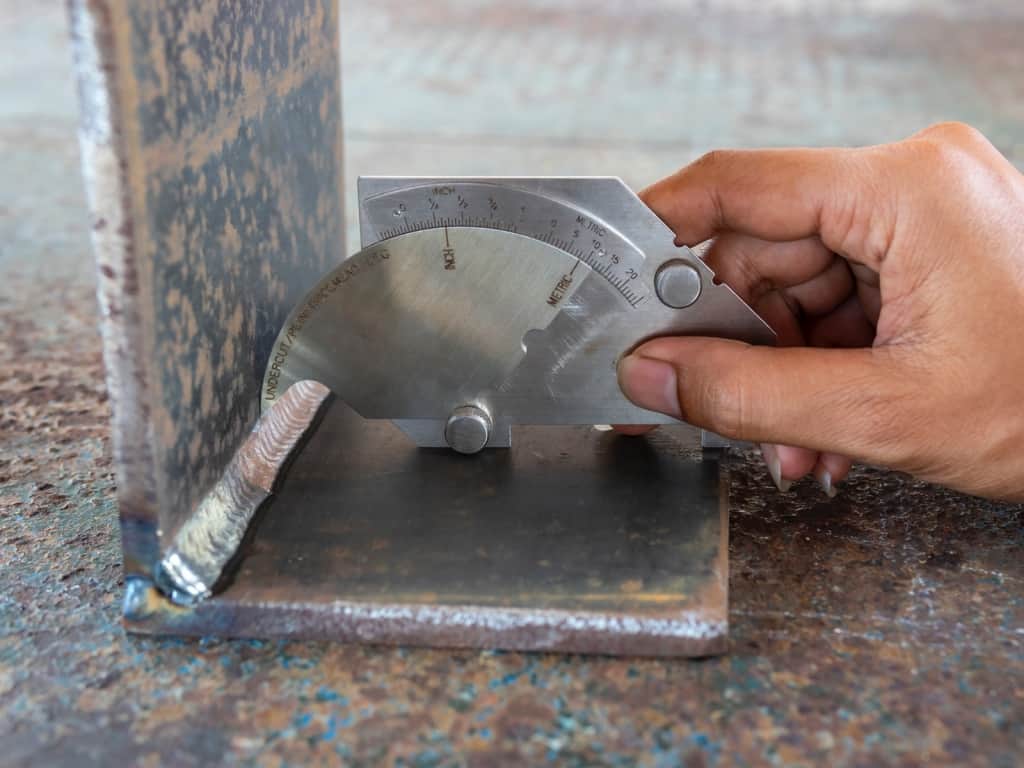Efficient Ways to Prevent Weld Undercut in Your Welding Projects
Efficient Ways to Prevent Weld Undercut in Your Welding Projects
Blog Article
Understanding the Causes and Solutions for Undercut Welding in Metal Construction Procedures
In the world of steel fabrication procedures, the occurrence of undercut welding poses a substantial challenge that demands a thorough understanding of its causes and sensible remedies. The complex interaction of numerous factors during welding procedures can cause this unfavorable phenomenon, influencing the architectural honesty and total quality of the welded joints - Preventing weld undercut. By exploring the source of undercut welding and checking out effective remedial procedures, makers can boost the standard of their craftsmanship and make certain the production of remarkable metal components
Usual Reasons of Undercut Welding
Regularly neglected in steel fabrication, undercut welding occurs due to various variables that demand thorough attention and knowledge to be properly minimized. Furthermore, inappropriate welding techniques, such as using the wrong welding angle or take a trip rate, can likewise contribute to undercut development. The selection of welding parameters, such as voltage, current, and cord feed rate, plays a substantial duty in the occurrence of undercut welding.
Impact of Incorrect Welding Parameters
Unreliable welding criteria can dramatically jeopardize the stability and top quality of welded joints in metal fabrication processes. The influence of inaccurate welding parameters manifests in various means, bring about structural weaknesses and issues in the bonded parts. One vital element impacted by improper welding parameters is the penetration depth of the weld. Not enough warm input as a result of low welding currents or exceedingly high travel rates can lead to inadequate blend between the base steels, resulting in incomplete joint infiltration and deteriorated bonds. Conversely, too much heat input triggered by high welding currents or slow traveling speeds can lead to burn-through and excessive reinforcement, creating a brittle and unpredictable weld structure. In addition, inaccurate criteria such as incorrect voltage setups or incorrect electrode angles can add to irregular weld bead accounts, absence of fusion, and enhanced opportunities of flaws like undercutting. Careful focus to welding criteria is paramount to guarantee the production of top quality welds with the desired mechanical buildings and architectural honesty.
Effect of Improper Lantern Angle
Inappropriate torch angle in welding operations can significantly affect the high quality and stability of the final weld joints in metal fabrication processes. The lantern angle plays an important role in determining the warmth input and distribution during welding. When the torch angle is incorrect, problems such as damaging can develop. Undercutting is an usual welding flaw where a groove creates along the weld toe, compromising the joint and compromising its architectural integrity.
A lantern angle that is as well steep can result in not enough infiltration, incomplete blend, and increased spatter. On the various other hand, a torch angle that is too shallow can lead to extreme infiltration, burn-through, and distortion of the base material. Preventing weld undercut. Proper lantern angle is necessary for making certain constant weld top quality, stamina, and appearance
To stop undercutting and various other flaws brought on by inappropriate lantern angles, welders should be trained to preserve the right lantern angle throughout the welding process. Routine tracking and adjustment of lantern angles during welding can aid attain sound welds with minimal issues.
Duty of Inadequate Welding Methods

An additional aspect of poor welding techniques is improper weld preparation. Insufficient cleaning of the base metals, wrong joint design, or inadequate edge preparation can all add to damage welding. Poor directory protecting gas coverage or using the wrong kind of gas can result in incomplete combination and the development of undercut flaws.
To resolve the duty of poor welding techniques in steel construction processes, it is vital to supply extensive training for welders. Proper education and learning on welding criteria, joint prep work, and shielding gas selection can aid stop undercut welding and make certain top quality welds in steel fabrication tasks.
Effective Solutions for Undercut Welding
Addressing undercut welding in metal manufacture needs implementing reliable services to enhance weld quality and structural integrity. Among the key options to combat undercut is to adjust welding parameters such as voltage, existing, and travel rate to guarantee appropriate warmth input and blend. By fine-tuning these setups, welders can prevent extreme melting of the base steel and filler product, reducing the possibility of undercut development.
Furthermore, appropriate joint preparation is essential click in avoiding undercut. Guaranteeing tidy base metal surfaces devoid of impurities and making use of the suitable bevel angle can assist advertise far better weld infiltration and minimize the threat of undercut - Preventing weld undercut. Employing suitable welding methods, such as weaving or oscillating the torch, can likewise assist in dispersing warmth uniformly and filling the weld joint effectively, lessening the opportunity of undercut issues
Furthermore, picking the proper welding consumables, consisting of electrodes and filler metals, is crucial in mitigating undercut. Using products with appropriate chemical structures and mechanical properties can add to achieving audio welds with marginal undercut. Normal examination and quality control procedures ought to additionally be carried out to detect and deal with undercut issues immediately, making certain the total honesty of fabricated metal parts.

Verdict
In conclusion, recognizing the causes and solutions for undercut welding in steel manufacture processes is critical for attaining high-grade welds. By addressing typical reasons such as inaccurate welding specifications, inappropriate lantern angle, and inadequate welding methods, welders can stop undercutting and make certain solid, long lasting welds. It is vital to focus on these aspects and implement reliable options to boost the general welding process and end product quality.

Report this page